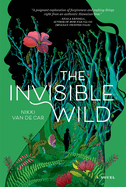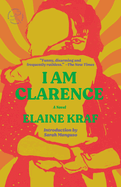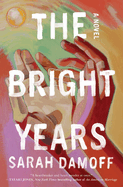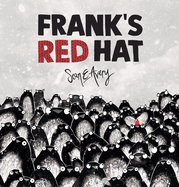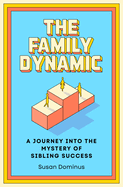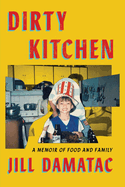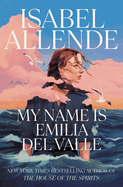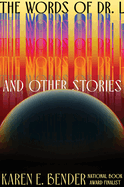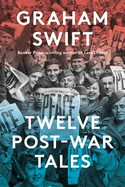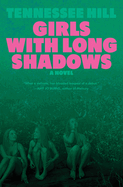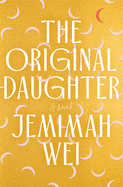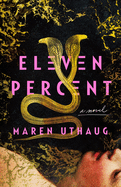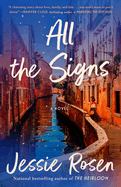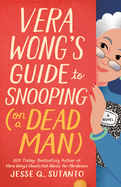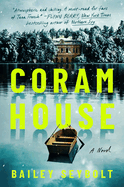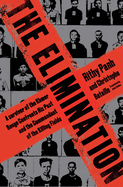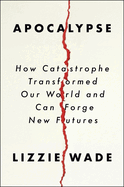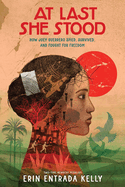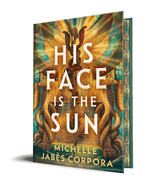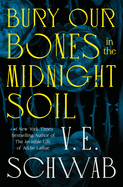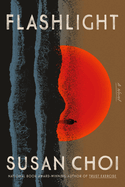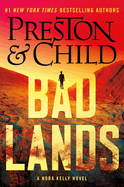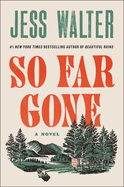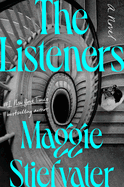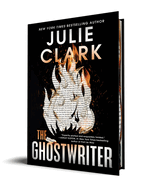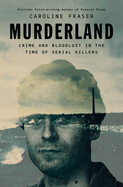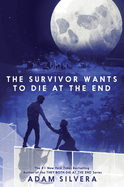Friday, May 9, 2025
What is it about families that makes them hotbeds of secrets, rivalries, and trauma for some, yet networks of support and springboards to success for others? Tolstoy said, "All happy families are alike; each unhappy family is unhappy in its own way," but we'll let you be the judge once you've perused this week's reading recommendations. The Family Dynamic by Susan Dominus, for instance, examines motivational trends between siblings who have logged some astronomical achievements. And Sarah Damoff's novel, The Bright Years, weighs how "love measures up against the twin burdens of anger and disappointment" within a family forged by pain. Meanwhile, for teen readers, Nikki Van De Car captures a "dazzling blend of myth and magic" in her debut, The Invisible Wild, about a teen trying to stop the destructive path of bulldozers on the Big Island of Hawai'i.
Plus, in The Writer's Life, novelist Katy Hays talks about the atmospheric adventure books that were formative in her understanding of what storytelling could look like and the author she turns to when she's working on something new.
I Am Clarence
by Elaine Kraf
I Am Clarence, the first novel by Elaine Kraf (1936-2013), was originally published in 1969. This rediscovered classic was ahead of its time with its wrenching, kaleidoscopic account of a single mother struggling with mental health and raising a child with a disability.
The lion's share is narrated by this unnamed New York City woman, a would-be poet and devoted caregiver to Clarence, who has frequent seizures, poor eyesight, and aphasia. The woman has had many lovers, including Clarence's hematologist and a violinist. She considers them all "Clarence's fathers" but regrets never settling down with Ferdinand, the tattooed circus performer. Memories from her time spent traveling with the circus blur into those from her two years hospitalized with psychosis. Images of elephants and masks abound. How much is real?
It's all deliciously off-kilter. Kraf (The Princess of 72nd Street) complicates the picture by presenting vignettes out of chronological order, supplementing them with poems and letters, and inserting a variety of first- and third-person perspectives on mother and son. The novel pushes the envelope through experimental form and passages voiced by those including the woman's brother, her doctor, a post-lobotomy patient, and a dead character. Readers must piece together the fragments--and question the woman's competence.
Novelist Sarah Manguso's astute introduction praises the "unnerving funhouse mirror" Kraf has created. As brilliant as it is unsettling, this story of desperate maternal love threatened by mental illness is a hidden gem like The Shutter of Snow by Emily Holmes Coleman and The Pumpkin Eater by Penelope Mortimer. --Rebecca Foster, freelance reviewer, proofreader and blogger at Bookish Beck
Discover: Elaine Kraf's debut novel, I Am Clarence, a rediscovered classic from 1969, is the brilliant, unsettling story of a mentally ill single mother raising a son with a disability.
The Bright Years
by Sarah Damoff
On its surface, Sarah Damoff's debut novel, The Bright Years, is about a nuclear family struggling with a present affected by past experiences. As a young woman, Lillian placed a baby for adoption. Meanwhile, Ryan hopes to escape the specter of his abusive, alcoholic father. When they meet, both are desperate to build something beautiful out of their pain. They fall in love in a glittering montage: "He looks at me... like pain can't touch us. Never mind that it has touched us all our lives, and our parents before us." Damoff's moving prose reads like a held breath, even as hope for the future arrives in the form of their daughter, Georgette, whom they call Jet: "In many ways, Jet saves us. But salvation is not erasure--it's a redistribution of pressure."
Each character narrates their own section, and the sections bounce between years as Lillian holds onto her secret, Ryan descends into addiction, and Jet wonders how her mother can bear to let her father back in. When a seismic loss rocks the tentative stability they achieve, Damoff explores through Jet how the weight of love measures up against the twin burdens of anger and disappointment. Jet builds her own family as she learns that in order to truly live, she must embrace the pain that comes with it, not shut it out. With a title that intentionally belies the emotional depths within, The Bright Years is a dazzling, true-to-life depiction of adoration and damage, and the lovely ache of living as the pendulum swings between them. --Kristen Coates, editor and freelance reviewer
Discover: This dazzling debut novel about a family forged from pain invites readers to consider the limits and possibilities of hope and love.
My Name Is Emilia del Valle
by Isabel Allende, transl. by Frances Riddle
Isabel Allende brings the experience of more than 20 books to My Name Is Emilia del Valle, a swashbuckling tale of the life and adventures of a young woman born in San Francisco in the 1860s. Emilia travels from California to her father's native Chile during that country's civil war, bucking social norms and going wherever she's told she can't.
A young Irish novice nun named Molly Walsh is seduced and abandoned, pregnant, by a Chilean aristocrat. Devastated, she accepts a marriage proposal from a colleague and friend in San Francisco's Mission District, who will be the devoted stepfather, "Papo," to her child. Emilia lacks for nothing in the loving household.
Emilia first makes a living by writing sensational dime novels (under a pen name, of course). Next, she decides to become a journalist, launching a newspaper career, traveling to New York and then abroad; she journeys to Chile to cover the civil war as a reporter for San Francisco's Daily Examiner. Female reporters are vanishingly rare, but as war correspondents, unprecedented; and Emilia del Valle writes under her own name.
As she has in previous acclaimed novels, Allende (The House of the Spirits; A Long Petal of the Sea) applies riveting storytelling to an exploration of history through the lens of a fictional heroine. Allende's language, and Frances Riddle's translation, is evocative in its descriptions of Chile's lovely landscapes, a young woman's complicated love for her family, and the horrors of the battlefield. This enthralling novel leaves Emilia, still young, in a position of some uncertainty: readers may hope for more from this plucky protagonist in a possible sequel. --Julia Kastner, blogger at pagesofjulia
Discover: A daring young woman and groundbreaking reporter journeys from San Francisco to Chile in the 1890s to investigate a civil war in this stirring novel by the celebrated Isabel Allende.
The Words of Dr. L and Other Stories
by Karen E. Bender
The dozen meticulously crafted short stories in National Book Award finalist Karen E. Bender's The Words of Dr. L and Other Stories speculate about the near future, reflect on the recent past, and imagine an alternative present.
Bender (Refund) dives deeply into family dynamics and extends her exploration outward to the community. Readers may be tempted to connect the title story with the present-day challenges of ending a pregnancy, except for the narrator's mission to connect with Dr. L and learn the top-secret words--rather than a medical solution--that will keep her child-free. Bender balances this futuristic element with the protagonist's memories of her relationship with her own mother, and with the woman who was once her best friend, now preoccupied with motherhood. "The Hypnotist" mines the dynamics of a father-daughter relationship, and how an aging father makes use of pandemic boundaries to conceal from his daughter his own fragility.
Despite a premonition of disaster in many of Bender's riveting selections, an atmosphere of gentleness envelops her characters. They yearn for connection. In "The Shame Exchange," the government issues a mandate in which citizens "who held too much shame" would hand off their shame to "a government official who had none." The citizens could then acknowledge that these officials, now burdened with shame, "needed to be treated with a bit of tenderness."
In Bender's investigation of isolation and community, parents and children, friends and seeming enemies, these 12 stories allow readers a wide lens through which to both contemplate world events and what may lay ahead--and to consider the vital role of compassion when weighing one's choices. --Jennifer M. Brown
Discover: In these beautifully crafted dozen stories, a National Book Award finalist examines the recent past and near future, and the choices human beings make in order to be in community with one another.
Unfinished Acts of Wild Creation
by Sarah Yahm
Sarah Yahm's debut novel, Unfinished Acts of Wild Creation, is a pulse of energy, a current of light, a harmonic hum expressed through the unforgettable story of the Rosenbergs: Leon, Louise, and their daughter, Lydia. With impeccable pacing, Yahm passes the narrative of their lives across the decades--from the 1970s Shabbat dinner where Leon meets Louise mere hours after her mother's funeral and forward into the uncertainty of life after unspeakable loss. Winner of the Dzanc Books Prize for Fiction, Unfinished Acts of Wild Creation is full of beauty and intelligence, showcasing Yahm's confident prose and wry humor.
Louise is a free spirit and a classical musician. She carries in her body the prolonged death of her mother, whom she actively disliked despite her undeniable influence. Leon, a therapist, does his best to care for Lydia. Years later, when she learns she also carries her mother's neurological disorder, she's desperate to save Lydia and Leon from the torture of her slow decline, and leaves their home, installing herself in a kibbutz thousands of miles away.
Art, music, and profound acts of sacrificial care provide a compelling rhythm to the novel. Maybe "her mother was right," Lydia muses as she hums in a cave and finds that "the distinction between her voice and her mother's disappeared, like the two of them were one body made only of sound." Or maybe the magic is found in the ordinary bonds of a family, carried through impossible situations by the improbable strength of their love. --Sara Beth West, freelance reviewer and librarian
Discover: Unfinished Acts of Wild Creation tells the moving story of the Rosenberg family and the bonds they forge over decades of care and love alongside the harsh realities of pain and loss.
Twelve Post-War Tales
by Graham Swift
Booker Prize-winner Graham Swift (Mothering Sunday) makes history personal in the stunning Twelve Post-War Tales, a collection of stories about the consequences of pivotal memories. Epiphany and nostalgia permeate the slices of life that delineate characters in crisis enduring loss, grief, and emotional regeneration. Every story (a half dozen previously published) is a keeper, but several stand out. In the Kafka-like opener, "The Next Best Thing," a German bureaucrat in 1959 officiously dismisses a 19-year-old Jewish private in the British Army seeking information about missing relatives, recalling how they've all been lucky ones. A widowed 72-year-old retired respiratory specialist driving "between heaven and hell" while volunteering during the Covid-19 pandemic in "Blushes" has a "gush of memory" of having had scarlet fever on his 10th birthday. In "Chocolate," one of four geriatric friends sheltering from the "cold dank darkness" in a Kilburn pub reminisces about a flirtatious encounter in the 1970s with a woman who worked in a chocolate factory in York.
In "Beauty," the perplexing anguish of a double grief pursues a 68-year-old grandfather visiting a college dorm room where his 18-year-old granddaughter, who had an "unmissable" resemblance to his late wife, overdosed. The closing story, "Passport," is the most startling and revelatory. A once-orphaned octogenarian seeks the document "clutching the proof of her identity" and reconstructs her past. Twelve Post-War Tales underscores Graham Swift's supple prose, crisp dialogue, and brisk narration, challenging readers to investigate their own primary lifemarks. --Robert Allen Papinchak, freelance book critic
Discover: Graham Swift's supple prose, crisp dialogue, and brisk narration evoke indelible character-propelled portraits that make history personal.
Girls with Long Shadows
by Tennessee Hill
Tennessee Hill's first novel, Girls with Long Shadows, is a dreamy, atmospheric tale of sisterhood and coming-of-age in the fictional town of Longshadow, on the Texas Gulf Coast. Nineteen-year-old triplets Baby A, Baby B, and Baby C were orphaned when their mother died in childbirth; their father's identity remains a mystery. But they have always known family in the form of their loving but distant Gram ("Manatee" to the townsfolk, for her swimming prowess) and their adopted, nearly deaf younger brother, Gull. The whole town looks askance at the girls, spookily identical and associated with their mother's early death. The family's golf course, Bayou Bloom, provides respite, and the bayou itself offers a connection to nature, with its fecundity and floods. Then one fateful summer, an act of violence, combining desire and objectification, ruptures the triplets, the family, and the town.
A tautly plotted Southern gothic, Girls with Long Shadows takes a distinctive perspective in Baby B's elegiac narration. Baby B speaks as "we" as often as "I." Only a few people other than themselves can tell the girls apart; even the boys they date may not make the effort. And intermittently the perspective shifts to a "Front Porch Chorus," in which the town speaks collectively, observing the girls from without: "They're a blur we never bothered to untangle." This lack of distinction is both a wound for the triplets and an indelible part of their identity.
Encompassing a single summer in the dripping, humid South, Hill's haunting debut deals in lyricism and tragedy as it considers the harm done to young women by the outside gaze. --Julia Kastner, blogger at pagesofjulia
Discover: Identical triplet girls are linked to tragedies across generations in this evocative first novel set along the swampy Texas Gulf Coast.
The Original Daughter
by Jemimah Wei
Singapore-born author Jemimah Wei opens her resonant debut, The Original Daughter, at "the end," in May 2015 Singapore. Gen, short for Genevieve, is the titular daughter whose mother has received a fatal cancer diagnosis, and has just four to six weeks left to live. "Call your sister... I want to see you and Arin together one last time," Ma implores. Gen knows Arin, now an internationally in-demand actor, would "drop everything and reappear," but even after four years of silence, Gen is desperate to maintain separation. With meticulous detail, Wei unfurls the aching provenance of the family's irreparable fracture.
Eight-year-old Gen was living with her parents and grandmother, when "[Arin] was dropped into our lives, fully formed, at the age of seven," relinquished from their relatives after the recent demise of a "politically 'disappeared' " grandfather, long presumed dead. He had, in fact, been living in Malaysia for decades with a second, "secret family."
Despite the sisters' closeness--or perhaps because of it--what Gen deems Arin's betrayals begin as teens, including an award-winning school essay publicly exposing family shame, and mining Gen's trauma for the screen as young adults. Excising Arin might be Gen's only option to survive.
Although Gen's relentless, self-admitted "hubris" occasionally threatens to weigh down the narrative, Wei's glorious phrasing and revelatory observations provide buoying antidotes: "simply ripping away the gauze of courtesy"; "our desperate arms locked around each other, both snare and salvation." Pa's simple declaration, "Now we are five," proves to be prescient warning of inevitable upset. From there, Wei reveals a tragic, haunting exercise in the limitations of not-quite unconditional love. --Terry Hong
Discover: First-time novelist Jemimah Wei poignantly, affectingly observes an extended family that sunders from dysfunction and betrayals in The Original Daughter.
Eleven Percent
by Maren Uthaug, transl. by Caroline Waight
Four women discover the cracks in their all-female utopia in Eleven Percent, the sharply written debut from Maren Uthaug, translated from the Danish by Caroline Waight.
Everyone in the new society agrees that men, with their high levels of testosterone, cannot be allowed to roam free. The minimum number of men necessary for breeding are kept in "spas" for procreation and recreation. Yet all is not perfect. Medea and Silence fight for the survival of their pagan convent, where Medea works magic, raises snakes, and sometimes protests for better treatment of the men in the spas. Wicca, heir of an important family of priests in the remade matriarchal Christian church, did well in her "body" classes in school but now struggles with her ritualistic duties and is still haunted by a lover who left her years before. And Eva, who cares for the young males in a Center, is hiding a childhood secret that could destroy her position.
Uthaug's vision of a matriarchal society falling into the same traps as patriarchal ones is strikingly realized. Although conception is voluntary, maintaining the ideal ratio of males to females leads to its own impingements on reproductive freedom. As brutally as Uthaug depicts the struggles of the haves and have nots in her new world, she also includes moments of sly humor. The sexual slang in the more advanced levels of the body classes makes for some particularly witty inversions of the world as we know it. Fans of social science fiction will be well pleased. --Kristen Allen-Vogel, information services librarian at Dayton Metro Library
Discover: Four women in a female utopia learn that the end of patriarchy is not the end of oppression in this sharply written and strikingly realized novel.
All the Signs
by Jessie Rosen
Jessie Rosen's breezy sophomore novel, All the Signs, follows a type-A Leo who goes on a mission to disprove her horoscope and unearths some unexpected insights about her life.
Dr. Leah Lockhart is poised to take over her father's medical practice when he retires. But right after an astrology reading at a friend's party says that she's living way out of alignment with her destiny, Leah's struck by a severe case of vertigo. Barred from work and determined to debunk the reading, she sets off on a winding journey to Venice, Istanbul, and Los Angeles--home of the mother who left her long ago. Leah meets fellow "Star Twins" who share her astrological map, and she gains a new perspective on her parents' stormy marriage and its implications for her past and present self. Coincidentally (or not?), her childhood best friend, now a handsome physical therapist, resurfaces just in time to help Leah heal her vertigo--and maybe her heart.
Rosen (The Heirloom) explores how astrology affects people's lives; though Leah is a diehard skeptic, she meets people whose own turning points have left them more open to its influence. Leah struggles to make sense of the sudden changes in her life, while she's also forced to confront her fears and desires, and what they mean for her future. Though her journey includes blissful moments of self-indulgence and freedom, Leah also asks herself tough questions about the kind of doctor, daughter, and woman she wants to be. All the Signs is a whirlwind escapist journey and a thoughtful meditation on identity and self-love. --Katie Noah Gibson, blogger at Cakes, Tea and Dreams
Discover: Jessie Rosen's breezy sophomore novel follows a type-A doctor whose journey to debunk an astrological reading yields unexpected insights.
Mystery & Thriller
Vera Wong's Guide to Snooping (on a Dead Man)
by Jesse Q. Sutanto
Even the irrepressible Vera Wong, making her second appearance in Jesse Q. Sutanto's humor-laden Vera Wong's Guide to Snooping (on a Dead Man), can fall for a phone scam. But this 61-year-old San Franciscan tea shop owner, who delights in calling herself an "intermediate murder investigator," refuses to be a victim, and reports the incident to Officer Selena Gray, her son Tilly's girlfriend. Outside the police station, Vera meets Millie, a young woman upset that her friend Thomas Smith has been missing for three days. Vera's snooping uncovers that Thomas's real name is Xander Lin. He's a social media influencer, part of a world Vera knows nothing about. Although Vera tracks down his girlfriend, talent manager, and grandfather, she finds that no one knows the real Xander.
Sutanto dispenses a fine layer of comedy while adding heavier themes such as ageism, loneliness, and the manipulation of the vulnerable. She also touches on the value of family and provides a look at Chinese culture. Vera feels empowered after having uncovered a murderer in her first outing, Vera Wong's Unsolicited Advice for Murderers, which leads her to take chances as she interrogates suspects. Vera's misleading appearance as a "helpless little old lady" disarms others; she brings food to each interview, for instance, but commands people to return her containers once they're finished. Vera goes a step further when she ventures into the social media world, overlaying videos of her cooking with narration about her ongoing Xander investigation, hoping to solicit aid from the public. Vera's good-natured rivalry with a fellow storekeeper and the found family she has cobbled together help her deal with isolation. A third outing with the energetic and sharp Vera would be most welcome. --Oline H. Cogdill, freelance reviewer
Discover: The irrepressible Vera Wong returns with a fine mixture of humor and heavy themes in her energetic second appearance.
Coram House
by Bailey Seybolt
In Bailey Seybolt's strong, moody debut novel, Coram House, the husk of a shuttered Catholic orphanage notorious for its legacy of abuse looms on the shores of Lake Champlain. True-crime writer Alex Kelley hopes Coram House will offer her a career restart. She's been offered a contract to ghostwrite a book about the orphanage and its history of violence.
The contract isn't very lucrative; furthermore, she had to sign "a punishing nondisclosure agreement," her name won't be on the cover of the book, and she'll have to stay in Burlington, Vt., for six months as she works on the project. But Alex feels she has no choice, because she is at her lowest. Her last true-crime book had numerous problems, and she is mired in grief for her recently deceased husband. The crux of Alex's work hangs on what happened to children who may have been killed at Coram House 50 years ago. Alex studies VHS tapes filled with interviews with former Coram House residents and the nuns, which only add to the mystery. Some remember brutal discipline but insist that no child died. Nevertheless, as Alex digs through old files and conflicting memories, new murders occur that might be connected to Coram House.
Seybolt maintains high suspense, making even searches through faded papers exciting. Scenes in which Alex learns how the children were disciplined are chilling. Although the Coram House property is being developed into luxury condos, the evil lingers. Seybolt convincingly shows Alex's growth in regaining her confidence as she works to uncover the truth. --Oline H. Cogdill, freelance reviewer
Discover: In this moody, suspenseful thriller, a true-crime writer working on a new book investigates whether children were killed more than 50 years before in a now-shuttered orphanage.
Biography & Memoir
Dirty Kitchen: A Memoir of Food and Family
by Jill Damatac
In the Philippines, the outdoor "dirty kitchen" is where the heavy-duty cooking takes place, as opposed to the indoor show kitchen where the privileged keep Western-style appliances meant to impress guests. Dirty Kitchen is a perfect title for Jill Damatac's debut memoir, given the themes of deception and inequality that followed her traumatic path from the Philippines to 22 undocumented years in the U.S.
In 1992, Damatac, then nine, flew from Manila to Newark, N.J., with her mother and sister to join her father. Whereas in the Philippines they'd lived in a "big marble house" he designed, in the U.S. they shared one cramped room in a relative's home. A crooked lawyer took thousands of dollars from them but never produced the promised visas. That lack of paperwork limited the family's opportunities and access. Damatac became a scapegoat for her father's anger over his frustrated ambitions. He beat her daily and demanded her earnings from part-time work.
Damatac is understandably angry about the lie of the American Dream, and she decries American imperialism in the Philippines, deftly incorporating the history of this multiply colonized country. Food becomes her primary way of reconnecting with her Indigenous culture. Filipino legends and recipes arise throughout the memoir, with each chapter named after a different dish she cooks. Pinikpikan (chicken stew) was traditionally made to appease the gods; Spamsilog (fried rice with canned pork) reflects American GIs' influence.
Though harrowing at times, this memoir is recommended to readers of Elaine Castillo, Stephanie Foo, Qian Julie Wang, and Tara Westover. It showcases the survival of the spirit and the sustaining power of heritage. --Rebecca Foster, freelance reviewer, proofreader and blogger at Bookish Beck
Discover: Jill Damatac's forthright foodoir calls out injustices: not just personal trauma, but the colonization of the Philippines and U.S. immigration policies that kept her undocumented for 22 years.
The Elimination: A Survivor of the Khmer Rouge Confronts His Past and the Commandant of the Killing Fields
by Rithy Panh and Christophe Bataille, transl. by John Cullen
One man's quest for truth after a genocidal regime killed his family is the haunting focus of The Elimination by acclaimed documentarian Rithy Panh and translated from the French by John Cullen.Panh was just a teenager when the Khmer Rouge stormed into Phnom Penh, the capital of Cambodia, in April 1975. Originally published in 2014, this edition includes a new introduction where Panh relates how his country experienced "a radical transformation and a radical suffering" for four horrific years that saw the deaths of an entire class of humanity in the killing fields of Cambodia.
In his graphic account of the evil perpetrated against the "new people" (i.e., the educated middle class), Panh decodes and deconstructs the ingenuous ways the Khmer regime rationalized mass murder, best embodied by the man known as "Comrade Duch," the dissembling commandant of Security Prison 21, or S-21. The narrative moves seamlessly from Panh's severe experiences of survival to his interview decades later with Duch for a documentary, Duch, Master of the Forges of Hell. The snippets of the q&a between Duch and Panh juxtapose the incongruity of the Khmer Rouge's pursuit of "pure ideas" against the utter depravity and moral filth it spawned.
In his interviews, Duch is a mild-mannered, educated cipher who talks, laughs, and lies. In his repeated denials of torture and murder, "Duch wants to believe that redemption can be bought with words," Panh notes. As this harrowing autobiography reveals, it cannot. Citing works by other genocide survivors throughout, Panh bequeaths the world an intimate yet universal rumination on the nature of humanity and evil not soon forgotten. -- Peggy Kurkowski, book reviewer and copywriter in Denver
Discover: The Khmer Rouge's reign of terror leads to a reckoning decades later when one survivor interviews the commandant of its most infamous prison in this haunting, harrowing autobiography.
Lessons from My Teachers: From Preschool to the Present
by Sarah Ruhl
In her fourth book of nonfiction, Lessons from My Teachers, playwright and poet Sarah Ruhl (Smile) celebrates the wisdom she's gained from traditional and unlikely sources. In brief, luminous essays, Ruhl shares not only what she has learned from her teachers and mentors, but how they taught: by example, presence, and "the nimble strength of connection."
Ruhl begins with her mother and her early teachers, sharing kindergarten insights such as "snacks are good" and "story time is sacred." She highlights lessons from classroom instructors, friends, students, animals, and even her childhood bookstore. She also writes about her father's death when she was in college, and finding her way to mentors whose teachings continue to ring through her life. The lessons themselves are often specific to Ruhl's experience but carry universal themes: about kindness, curiosity, grief, asking big questions, listening deeply, and believing in oneself.
Although each essay contains a kernel of joy or insight, the collection's heart lies in Ruhl's evocation of her grandmother's secret to life: "to be always and forever interested, deeply interested in other people and the world." Like her grandmother, Ruhl harbors an ardent curiosity about humans and the world they inhabit. Lessons from My Teachers is a tender, thoughtful, humorous slice of the wisdom gained from years of teaching and being taught. Readers will appreciate Ruhl's generous sharing of her own epiphanies and be moved to reflect on what they've learned--and from whom. --Katie Noah Gibson, blogger at Cakes, Tea and Dreams
Discover: Playwright Sarah Ruhl shares the wisdom she's gained from traditional and unconventional teachers in this collection of brief, luminous, joyful essays.
Political Science
Wonder City: How to Reclaim Human-Scale Urban Life
by Lynn Ellsworth
Amid the real-estate development battle between advocates of "hyper-dense" urban living with ever-taller towers at the center, and those who instead push for a return to human-scale city life, Wonder City is a call to action in which Lynn Ellsworth deftly argues in favor of the latter. This rigorously researched but approachable volume navigates architectural philosophy, legal precedent, and historical building patterns. Urban activist and economist Ellsworth's organized approach aims to bring more people to this conversation--not just those who might already be involved on various sides of the fight--and she makes the stakes of losing the "wonder city" clear not only for New York City but for urban development everywhere.
Ellsworth disentangles talking points from the reality of their ineffectiveness when put into practice, placing facts in the face of what many Americans are feeling: that affordability and quality of life worsen in urban centers as more towers go up, and public space, access to sunlight, and amenities dwindle with increases in private development. Ellsworth proposes a commitment to reinvesting in the "public realm" and to fortifying the ideal of the lost "commons"--areas and points of public use, utility, and rights that the assault of modernist architecture has been chipping away at for decades. Her thorough fact- and history-based approach, which is rooted in the lived contexts of cities and underscored by her personal experience as someone who knows what is being lost as the human-scale New York City disappears, presents a compelling argument for readers interested in the future of urban development, as well as anyone who has ever been enchanted by the Big Apple. --Michelle Anya Anjirbag, freelance reviewer
Discover: This informative and solution-oriented book passionately argues for a recommitment to building and reclaiming human-scale cities instead of ever-taller towers.
Social Science
Apocalypse: How Catastrophe Transformed Our World and Can Forge New Futures
by Lizzie Wade
Written amid one of the world's worst pandemics in a century and published in the wake of catastrophic California wildfires, journalist Lizzie Wade's Apocalypse widens the lens to describe vividly how multiple societies have experienced massive upheavals and have emerged altered in sometimes unexpected ways. Combining extensive research and reporting with some speculative digressions, Wade travels from prehistoric Europe to the contemporary West for stories of extreme hardship and humankind's response.
Wade, a correspondent for Science, defines "apocalypse" as a "rapid, collective loss that fundamentally changes a society's way of life and sense of identity." It can be triggered by climate change, disease, and foreign invasion. In her view, "apocalypses are not endings. They are transformations." Among other epochal changes that Wade describes are those affecting a region known as Doggerland, once occupied by tribes of hunter-gatherers and now submerged below the North Sea; and the scourge of the Black Death that wiped out 30%-60% of the population of Europe and simultaneously laid the foundation for the Renaissance. She devotes considerable attention to the fall of the Aztec civilization and to the evidence of its existence that survives beneath the streets of modern Mexico City. It's only one of the admiring descriptions she offers of the work of contemporary archeologists, who are among the heroes of her story.
One comes away from Apocalypse with mingled feelings of empathy for all the suffering--self-inflicted and imposed from outside--that humanity has endured over the millennia and of admiration for the resilience we have shown in the face of it. Lizzie Wade has done an impressive job recounting some of these stories. ---Harvey Freedenberg, freelance reviewer
Discover: Science journalist Lizzie Wade takes readers on a tour of cataclysmic change and the transformations it engenders.
Nature & Environment
Shelter and Storm: At Home in the Driftless
by Tamara Dean
"If wanting more awe is a kind of greed, I was greedy," writes Tamara Dean in her luminous essay collection, Shelter and Storm. Struggling with the realities of climate crises, Dean and her partner spent 15 years trying to live a sustainable life in a rural area of Wisconsin known as the Driftless: an unglaciated landscape marked by steep bluffs, old-growth forests, and, increasingly, natural disasters. They planted a garden, built a house of clay bricks, and worked to re-create a prairie habitat on their land. But Dean also searched for wonder and the species that inspire it: monarch butterflies, coneflowers, freshwater mussels, "slow blue" fireflies. Her essays chronicle her efforts to live in concert with the land and make it more hospitable to flora and fauna in danger of disappearing.
Dean's narrative is no naïve rural idyll: she writes honestly about floods, fires, tornadoes, and the debilitating effects of Lyme disease. "Nature has an agenda of its own," she admits, "and a certain degree of wariness is wise." Dean explores the complications of living amid natural phenomena that are indifferent or downright harmful to humans. She also writes about the challenges faced by her neighbors in the Driftless, many of them farmers with deep roots in the region who must deal with rising temperatures, extreme weather events, and unstable geopolitical forces. Shelter and Storm is a thoughtful portrait of an area whose beauty is often hidden, and a call to consider the implications of one's personal choices for the planet's future. --Katie Noah Gibson, blogger at Cakes, Tea and Dreams
Discover: Tamara Dean's luminous essay collection paints a thoughtful portrait of the Driftless region of Wisconsin and the struggles it faces due to climate change.
Parenting & Family
The Family Dynamic: A Journey Into the Mystery of Sibling Success
by Susan Dominus
Artfully merging the author's formidable storytelling gifts with research findings, The Family Dynamic: A Journey into the Mystery of Sibling Success by Susan Dominus examines the rare domestic alchemy that motivates siblings from the same household to reach great heights. An enduring fascination with the "rites and rhythms" of high-achieving families fuels Dominus's debut, offering readers an opportunity to hear directly from, among others, Ellis Marsalis Jr., father of acclaimed musicians Wynton, Branford, and Jason, and elite athlete Sarah True, sister of award-winning novelist Lauren Groff.
Dominus is a writer for the New York Times and mother to twin teenage boys. Her goal here is to introduce parenting themes gleaned from the notable families she interviewed. Parental inspiration matters but, as Dominus finds, siblings are often the ones who guide the direction of family achievement, as demonstrated through delightful forays into the lives of the phenomenally accomplished Brontë sisters.
Mary Murguía, chief judge of the U.S. Court of Appeals for the Ninth Circuit, is one of several extraordinarily successful siblings. Her parents demonstrated a solid work ethic but it was the children who pushed one another to succeed, motivated by a desire to "[burnish] the Murguía name." Dominus also refers to Harvard economist Raj Chetty's research on the power of a neighborhood to shape a child's future.
Are family expectations "a blessing and a gift or a burden that came with a steady low-grade pressure?" According to a 2014 study, if the expectations are framed in "the right way," they can improve a child's performance. Unearthing what constitutes this elusive right way is at the heart of Dominus's excellent book. --Shahina Piyarali
Discover: Susan Dominus examines factors that motivate siblings from the same family to reach great heights through interviews with, among others, author Lauren Groff and her sister, Olympian Sarah True.
Children's & Young Adult
The Invisible Wild
by Nikki Van De Car
In Nikki Van De Car's dazzling blend of myth and magic, The Invisible Wild, a Hawaiian teen who can see menehune endeavors to stop construction that endangers the forest spirits' sacred home.
Part-Hawaiian Emma Arruda, 16, and her family are busy preparing their Big Island home for her sister's wedding. Their chores, however, seem to be undone overnight. Emma, who has grown to believe that she imagined speaking to spirits as a child, is the one to catch the culprit: a strong, three-foot-tall man--a menehune. The being of legend leads her to a plot of 25 "miraculously pristine," "gorgeous acres" recently purchased by a developer. A bulldozer has already leveled many of its 'ōhi'a trees and hāpu'u (giant ferns). The menehune's community lives under all the destruction: "We have a sacred duty here," Koa, the menehune, explains. "We protect this forest, and we cannot leave it." Staying, however, will mean their deaths. Emma, unable to stop the construction, attempts to convince the menehune community to abandon a duty (kuleana) she doesn't understand.
Emma's forthright first-person narrative exudes a love for her Big Island home; her inextinguishable desire to help the menehune is part of her deep celebration of her Hawaiian identity, as well as her fear that a tradition and way of life is being erased. Van De Car's wondrous and magical YA debut cherishes Hawai'i's every day, developing a stunning atmosphere through creation chants, a pālila's "bubbly warble," mist "like the breath of an unseen dragon," and heaps of haupia (a coconut dessert). The Invisible Wild is altogether enthralling, hopeful, and great fun. --Samantha Zaboski, freelance editor and reviewer
Discover: A Hawaiian teen who sees forest spirits must stop the destruction of a menehune community's home in this lushly backdropped and tenderly wrought YA adventure rooted in legend.
Frank's Red Hat
by Sean E. Avery
Frank's Red Hat is a hilarious tale of creativity--first scorned, then redeemed--as one inventive penguin tries to get his fellow seabirds to appreciate the finer qualities of his functional, fashionable way to keep warm.
Frank is known within the penguin community for "doing things differently" and being "full of ideas." Unfortunately, most of his ideas are not great. The penguins are understandably nervous when, one day, Frank wears a red hat. Not only had the seabirds never seen a hat before but they had never seen anything red. When Neville dons the hat, a killer whale leaps out of the ocean and eats the penguin. The other penguins don't believe Frank's assurances that the hat had nothing to do with Neville's tragic death. Frank tries to get the penguins to appreciate his creation by making several differently colored hats, but the wary seabirds don't trust him. So, Frank tries to make one final, perfect hat: "The evil hat will end us all!" the terrified penguins yell. Frank is crushed until... a non-penguin someone asks for his masterpiece!
Sean E Avery (Happy as a Hog Out of Mud) uses jaunty text that is active, direct, and suitably sly. His characters feature large, round eyes with expressive eyebrow lines, and his world is rendered almost entirely in black, white, and grays, which allows the colorful hats to stand out. The clever, digitally collaged illustrations add plenty of humor and depth to the story, and readers are advised to pay attention: sight gags amplify the fun and loose ends are often tied up in the art. Frank's Red Hat should serve as both a boisterous read-aloud and an excellent choice to linger with after story time. --Lynn Becker, reviewer, blogger, and children's book author
Discover: Frank's Red Hat is the jaunty, sly, extremely amusing tale of a penguin who creates a colorful hat, only to find his fellow penguins are too nervous to appreciate it.
At Last She Stood: How Joey Guerrero Spied, Survived, and Fought for Freedom
by Erin Entrada Kelly
Two-time Newbery Medal winner Erin Entrada Kelly (Hello, Universe; The First State of Being) turns her immense talents to nonfiction in an inspiring middle-grade biography about Filipino hero Josefina "Joey" Guerrero. The spy and guerilla fighter overcame tremendous odds while supporting the Allied troops in the Philippines, and went on to win the U.S. Presidential Medal of Freedom, but died in obscurity. At Last She Stood tells Guerrero's story with compassion and respect, and enables the young audience to appreciate the incredible depth of her courage and resilience.
Kelly's approachable account introduces Joey and swiftly builds momentum and intrigue with her spy activity during World War II. Joey is diagnosed with leprosy around the same time the Japanese occupy the Philippines, so she decides to spend what is left of her life in the guerilla movement supporting the Allies. The formidable young woman faces mortal dangers as she delivers important messages that help the American and Filipino forces fight the Japanese--her condition means she is ignored and shunned, allowing her to bypass Japanese soldiers. Once the war ends, Joey receives permission to move to the United States, where she can be treated for her leprosy.
Kelly's exemplary research offers fascinating knowledge about Guerrero as well as the Philippines, the history and horrors of leprosy, and World War II. At Last She Stood gives a remarkable woman the respect and recognition she deserves. Photographs, maps, sidebars, an author's note, and other supplemental materials enhance this already gripping biography. Kelly's nonfiction debut shows her incredible versatility--here's hoping it's only the first. --Jen Forbus, freelancer
Discover: A two-time Newbery Medal winner forays into nonfiction with a stunning biography about a courageous Filipino hero.
His Face Is the Sun
by Michelle Jabès Corpora
Michelle Jabès Corpora (Holly Horror) celebrates Egypt, the country of her parents' birth, in the epic, strikingly picturesque His Face Is the Sun.
King of High Khetara Amunmose's 17-year-old triplets, Meryamun, Sitamun, and Bakenamun, live in the palace at Thonis. As her father wastes away from a mysterious illness, Sita, a princess born between two princes, begins to recognize the brutality and deceit inherent in palace life.
Among the commoners, Neff is haunted by a nightmare of a wounded lamb: "beware, for soon the Great River of Khetara will turn to blood." When the patron goddess of Neff's home parades through town on the way to her festival, Neff is singled out; the 13-year-old cries tears of blood and is told she will "be prepared for the priesthood." Meanwhile, 19-year-old Rae, a farmer's daughter in Low Khetara, is disgusted by how Amunmose's regime increasingly takes from her poor neighbors; she turns to revolution when Amunmose's nomarch demands an impossible task. And Karim, a 19-year-old tomb-robber from the western Red Lands, stumbles upon a terrible power. His flight from the menace places him on Neff's prophetic path, along with Sita and Rae, and all must "beware of what is unseen."
Corpora integrates several historical texts into this grand first novel in a trilogy, including the Oracle of the Lamb, an actual ancient prophecy that plays a central role in her majestic fantasy. The author develops beguiling characters, cinematically describes landscapes, and builds a sense of realism within the fantastical; His Face Is the Sun is an excellent choice for fans of Tomi Adeyemi and Sabaa Tahir. --Siân Gaetano, children's and YA editor, Shelf Awareness
Discover: An entrancing, epic first novel in a trilogy built around an actual ancient Egyptian prophetic text.
Coming Soon
The Writer's Life
Reading with... Katy Hays
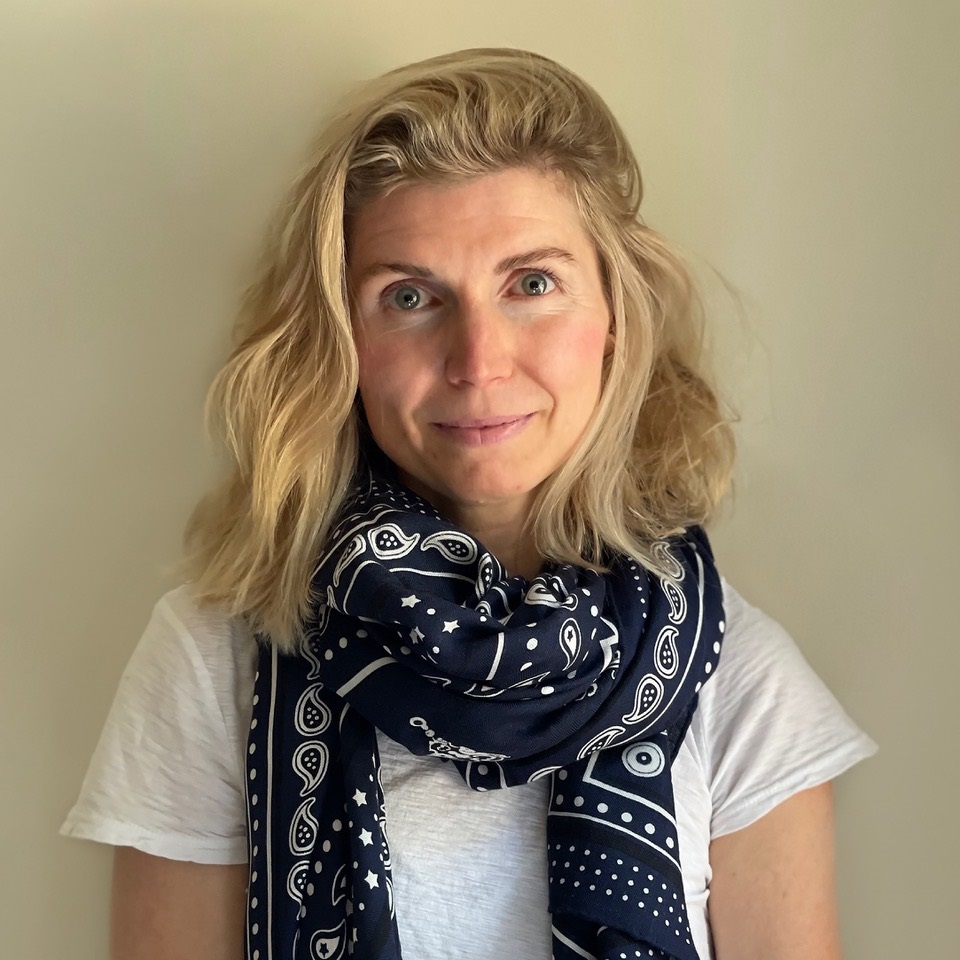 |
|
| photo: Julia Gravette | |
Katy Hays is the bestselling author of The Cloisters. In addition to writing, Hays works as an adjunct art history professor, teaching rural students from Truckee to Tecopa. She holds an M.A. in Art History from Williams College and pursued her Ph.D. in Art History at UC Berkeley. Her academic writing has been published by Ashgate, an imprint of Routledge. Her new novel, Saltwater (Ballantine Books), is an electrifying thriller about an opulent family and their mysterious assistant whose annual retreat to Italy is shattered by the resurfacing of a decades-old murder.
Handsell readers your book in 25 words or less:
The perfect novel to cure your White Lotus hangover; in Saltwater, three women will stop at nothing to escape a family that has everything.
On your nightstand now:
Dominick Dunne's People Like Us. I have a rule that when I'm drafting or actively revising, I'm not allowed to read books published after 2005 because if I do, and the book is really good, I despair that my work in progress will never be as good. So, to circumvent the comparison game (it's bad for everyone involved!), I only read older fiction. Someone, somewhere, mentioned Dunne and I squirreled away the recommendation and have become obsessed. It also scratches my itch for literary gossip: *whispers* he was Joan Didion's brother-in-law!
Favorite book when you were a child:
A tie between The Egypt Game by Zilpha Keatley Snyder and Over Sea, Under Stone by Susan Cooper. Both books were published in the late 1960s and I read them in the late 1980s or early '90s, but they were absolutely formative and the first books that taught me what a story could really be, what it was capable of doing. Also, talk about atmosphere!
Your top five authors:
My three north stars are Patricia Highsmith, Daphne du Maurier, and Shirley Jackson, but I'm also a huge fan of contemporary writers Christopher Bollen and Calla Henkel. If I were only allowed to read novels by these five writers for the rest of my life, I think I'd be just fine.
Book you've faked reading:
A Visit from the Goon Squad. I'm a huge, huge fan of The Keep by Jennifer Egan, but it's her only book I've ever read. Every time someone mentions A Visit from the Goon Squad, I nod along like I know what they're talking about, but the truth is, I've never so much as read the first page. Criminal, I know. Especially because I adore The Keep.
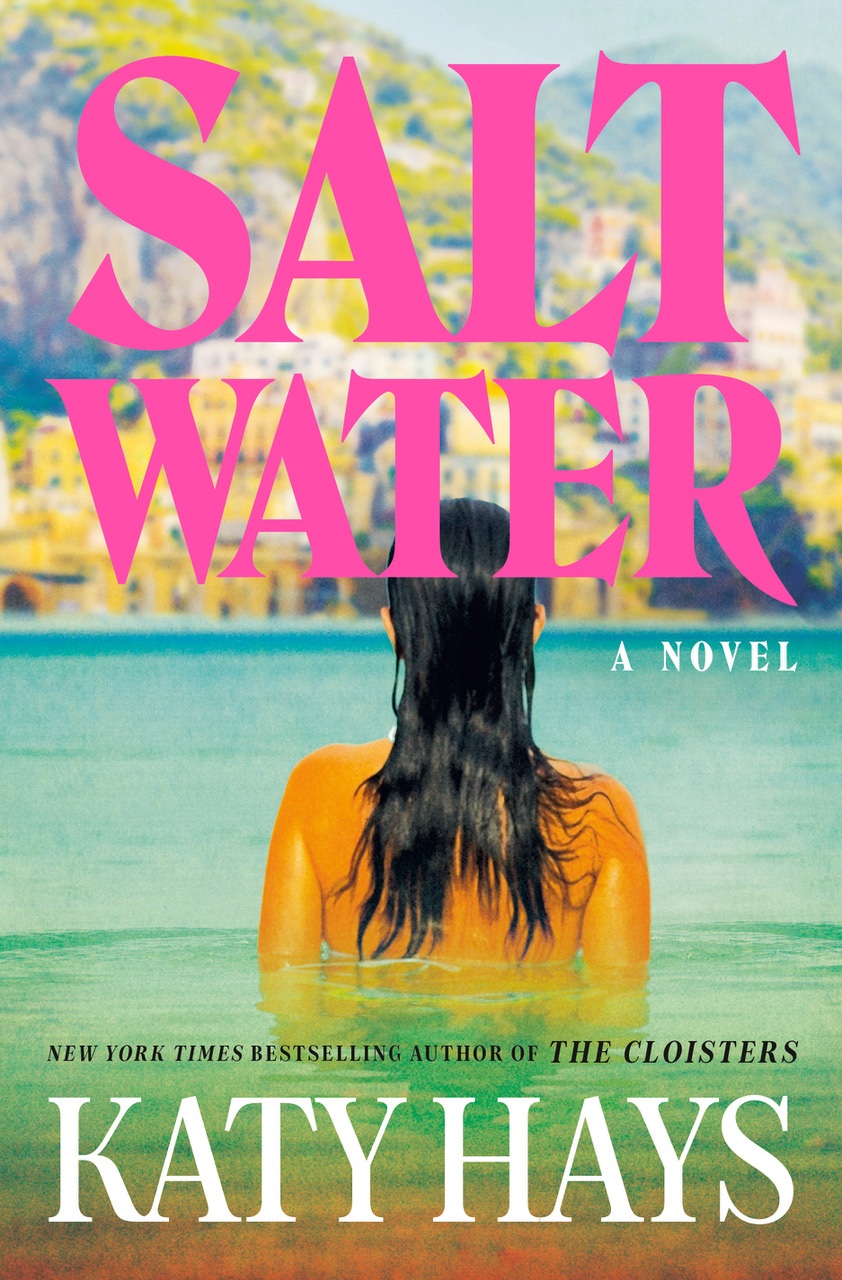 Book you're an evangelist for:
Book you're an evangelist for:
I really don't think enough people are reading Christopher Bollen. I'm a broken record--talk to me for three minutes about books, and it's likely I'll try to push a Bollen novel on you before you walk away--but in my opinion, he's the most compelling literary suspense writer working today. My favorite novel of his is The Destroyers, but I also think A Beautiful Crime and Havoc are wonderful. He's the kind of writer to whom I will happily give an extra 100 pages run time just because I want to exist longer in his worlds, and really, isn't that the best endorsement?
Book you've bought for the cover:
I've never bought a book for its cover! But for a long time I avoided Silvia Moreno-Garcia's Mexican Gothic because I didn't like the cover. Then I picked it up several years after it came out, loved it, and instantly acquired all her backlist and am now a diehard fan.
Book you hid from your parents:
Anything Baby-Sitters Club! My mom thought those books were trash! What she didn't realize was that a well-rounded reading diet necessarily includes some junk food, too! Justice for the Baby-Sitters!
Book that changed your life:
Victoria Holt's On the Night of the Seventh Moon. I still don't know how I first came across Holt. I think it's possible there was a copy of one of her novels in the free bin at our local thrift when I was younger, but in any case, she found me, and my life was never the same. The queen of gothic romance, Holt's novels were the first "sexy" books I ever read (pretty tame by contemporary romance standards!) and I've been a lifelong reader of romance ever since. (Like I said above: everyone needs a well-rounded literary diet!)
Favorite line from a book:
Not from a book. My favorite line is from a response Shirley Jackson wrote to an angry letter about "The Lottery." "Dear Mrs. White. If you don't like my peaches, don't shake my tree."
Five books you'll never part with:
Ira Levin's Rosemary's Baby
Daphne du Maurier's The Scapegoat
Jilly Cooper's Riders
Sarah Waters's The Little Stranger
Joan Didion's Slouching Towards Bethlehem
Book you most want to read again for the first time:
The Perfect Nanny by Leila Slimani. I found this novel so shocking, so compulsive that it left me literally breathless. I've since re-read it (it's still shocking!) and find it the perfect psychological thriller. I wish more writers were willing to take extraordinarily dark swings like Slimani does in Chanson Douce (the original French title translates as "lullaby"). What an achievement. If only I could recapture the original horror I felt on the first read!
Book Candy
Book Candy
Mental Floss found "12 things you say without realizing you're quoting poetry."
---
Headline of the day, via the Guardian: " 'Funny, sexy and a bit weird': inside the new wave of literary parties."
---
"James Joyce, with his eyesight failing, draws a sketch of Leopold Bloom (1926)." (via Open Culture)
Rediscover
Rediscover: Andrew Gross
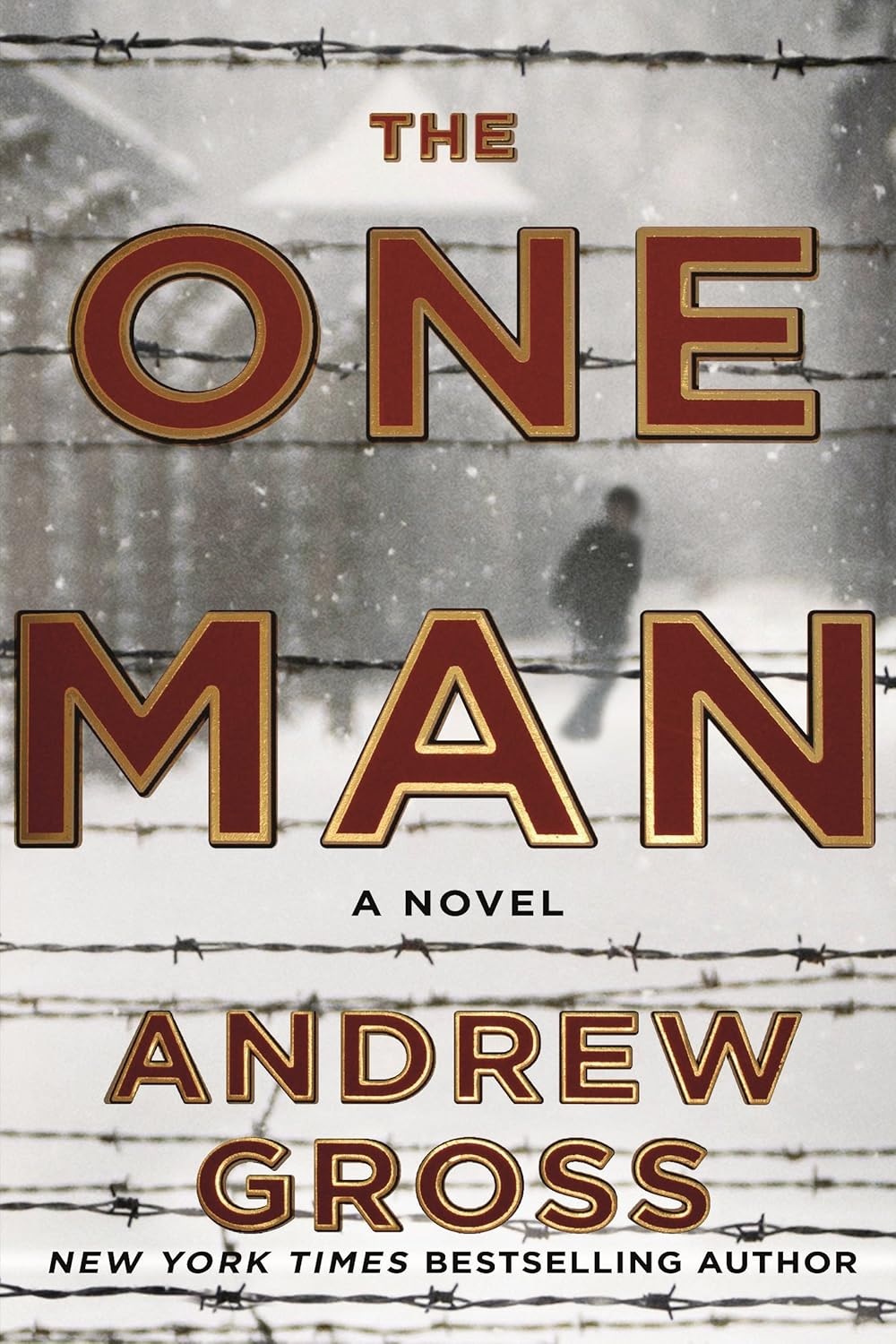 Andrew Gross, "a member of a prominent New York apparel family who abandoned a career in the rag trade to write nearly 20 crime and political thrillers, including five bestsellers with James Patterson," died on April 9 at age 72, the New York Times reported.
Andrew Gross, "a member of a prominent New York apparel family who abandoned a career in the rag trade to write nearly 20 crime and political thrillers, including five bestsellers with James Patterson," died on April 9 at age 72, the New York Times reported.
Gross's own novels include Eyes Wide Open (2011), 15 Seconds (2012), No Way Back (2013), and Everything to Lose (2014), "as well as his popular series featuring the character Ty Hauck, a detective who probes the dark doings behind the mansion gates of Greenwich, Conn.," the Times noted, adding that The One Man (2016) "centers on a young Jewish man who escapes the Krakow ghetto early in World War II and later joins an American intelligence effort to rescue a renowned physicist from the Auschwitz concentration camp."
A grandson of Fred P. Pomerantz, founder of Leslie Fay Inc., Gross was in his 40s when he decided to trade his executive position with the apparel company for a writing career. In a 2015 interview, he said, "Basically, I came home without a job one night and announced to my wife and three kids that I wanted to write a novel."
He spent three years writing, editing, and attempting to sell his first novel, Hydra, which was never published. Then he received a call from Patterson's publisher asking if he would be willing to talk with the bestselling author. An editor at the publishing house had sent Gross's manuscript to Patterson, who invited him to breakfast and said that "he had several projects he wanted to write and not enough time to do them," Gross recalled on his website. "I had the incredible foresight to say yes."
Their first book together, 2nd Chance (2002), was the second installment of Patterson's Women's Murder Club series. Gross described his early experience working with Patterson "like a combination MFA and MBA rolled into one." The result: "My first book was a #1 bestseller." The partnership with Patterson led to further successful books, including Lifeguard (2005) and Judge & Jury (2006).
Gross subsequently wrote his own novel, The Blue Zone (2007), and in 2018 published "what he considered his most personal work, Button Man, about someone from a poor Jewish family on the Lower East Side of Manhattan who fights his way up the ladder in the garment trade only to find himself in a Depression-era standoff with vicious Jewish mobsters," the Times wrote.
In a Facebook post, Patterson wrote: "I'm saddened by the loss of my friend and co-author, Andy Gross. He was a hugely talented writer. We did several books together, including some of the early Women's Murder Club novels. Andy recently shared some personal reflections on his heroic battle."


